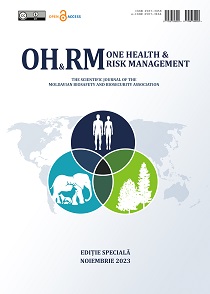Abstract
Introduction. Alcohol consumption is globally recognized as the third-largest risk factor for premature death, posing significant harm to health. In numerous countries, alcohol stands as the primary cause of nearly a third of total traffic accidents and related fatalities. BAC Breath analyzer has never been used in Pakistan and there is no data available about the results of the BAC breath analyzer.
Aim. To compare the concentration of alcohol in breath (BrAC) and blood (BAC) samples of drinkers by applying statistical analysis and Computational identification of binding sites of neuropeptide y protein and neuropeptide y receptor.
Material and methods. Fifty participants took part in this study, providing both blood and breath samples under the influence of alcohol. Additional data, including age, height, weight, and the amount of alcohol consumed, was recorded to facilitate comprehensive statistical analysis. The chemical method was employed to detect alcohol presence in blood samples, utilizing Widmark’s Equation for calculating alcohol concentration. To find the concentration of alcohol in blood samples the mathematical procedure is the best ne to be used for research purposes. Simultaneously, a computational study was conducted to identify the binding sites of neuropeptide Y protein and its receptor protein. This computational analysis holds potential applications in the development of antibodies and drug development.
Results. The results of both procedures were compared and analyzed using the Pearson product-moment correlation. The strong correlation, with a value of r=0.992, indicates a robust relationship between the outcomes of the two testing methods. Additionally, genetic factors of addiction were explored in this study. The graphical representation of our findings reveals that a few individuals exhibit a higher concentration of alcohol in blood compared to breath samples. The mean ratio ±SD for n=50 was 0.105±0.0782 and 0.094±0.0730, demonstrating consistency. The device used in this study has proven reliable in many regions, including 38 locations in Pakistan. Antibodies can aid in identifying the expression level of neuropeptide Y protein, a genetic factor in addiction. Computational data on the binding sites of neuropeptide Y protein and its receptor protein can be instrumental in developing peptide-based drugs. These drugs have the potential to mitigate the effects of neuropeptide Y protein based on the genetic factor of addiction in the body.
Conclusions. The breath analyzer stands out as a reliable, efficient, and cost-effective tool for swiftly testing alcohol concentration in the body, providing results in just 30 seconds. Its portability makes it applicable for use by law enforcement agencies, traffic police, and medical professionals, enabling rapid and convenient alcohol concentration assessments. The device's adaptability to various environmental conditions, including temperature and humidity fluctuations, enhances its versatility. This technology has the potential to replace traditional potassium dichromate tests in forensic sciences. The identified binding sites in our study offer opportunities for developing antibodies and drugs targeting the Neuropeptide Y protein. These antibodies can be instrumental in assessing the expression of neuropeptide Y protein, contributing to the evaluation of genetic factors related to addiction.
|
 Views: 148|
|
Views: 148|
|
This work is licensed under a Creative Commons Attribution 4.0 International License.

